| |
|
| |
|
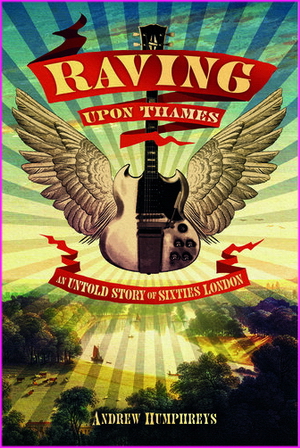 |
Raving Upon Thames: An Untold Story of Sixties London - Andrew Humphreys (ISBN-13 978-0993570230)
Richmond’s Crawdaddy Club launched the careers of both the Rolling Stones and the Yardbirds, with their guitarists Eric Clapton, Jeff Beck and Jimmy Page. At the same time, UK festival culture was born on Richmond’s rugby fields, while upriver Eel Pie Island was a magical ravers’ hideaway where Rod Stewart, David Bowie and Jimmy Page hung out before taking to the stage themselves.
From 1956 to 1971, the riverside suburbs to the southwest of London, from Richmond, through Twickenham to Kingston, nurtured a music and youth culture scene that shaped the Sixties. While Liverpool produced the Beatles and the Merseybeat sound, Richmond upon Thames launched the Rolling Stones, the Yardbirds and countless rhythmic and bluesy imitators.
Richmond’s annual outdoor jazz weekend evolved into a rock festival that continues until today at its substitute home of Reading. Secluded on a private island in the Thames, the Eelpiland club, as well as being one of the best places in Britain to experience live music, doubled as a laboratory for maverick experimental social-working.
Underpinning the scene were three visionary characters: ‘Prince of Pan’ Arthur Chisnall, book-keeping jazz fanatic Harold Pendleton and Rasputin-like impresario Giorgio Gomelsky. What they got up to around Richmond and the impact they had on popular music in the UK has until now never been given the recognition it deserves – this book places them at the heart of a great lost chapter in the story of Sixties London. |
| |
|
| |
|
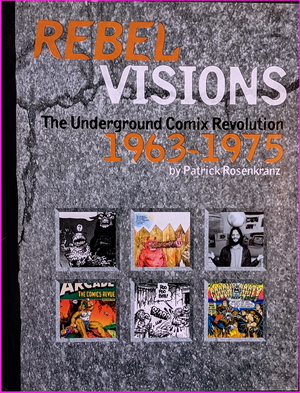 |
Rebel Visions: The Underground Comix Revolution 1963-1975 - Patrick Rosenkranz (ISBN13: 9781560974642)
A provocative chronicle of the guerilla art movement that changed comics forever. This comprehensive book follows the movements of 50 artists from 1967 to 1972, the heyday of the underground comix movement. Through interviews with the participants and other materials, Rebel Visions is the most intimate look ever at the people and events that forged the phenomenon known as underground comix, from New York to San Francisco, from the corn belt to deep in the heart of Texas, beginning that day in 1968 when R. Crumb debuted Zap #1 from a baby carriage on Haight Ashbury Street. Rosenkranz has spent over 30 years researching this book and acquiring the cooperation of every significant underground cartoonist who worked throughout this period, including Crumb, Gilbert (Fabulous Furry Freak Brothers) Shelton, Bill (Zippy) Griffith, Art (Maus) Spiegelman, Jack Jackson, S. Clay Wilson, Robert Williams, and many more. The book is illustrated with many never-before-seen drawings by all of the underground cartoonists and exclusive photographs. |
| |
|
| |
|
 |
The Republic of Rock: Music and Citizenship in the Sixties Counterculture - Michael J. Kramer
(ISBN-13 : 978-0195384864)
The Republic of Rock uncovers the lost story of rock music and citizenship in the sixties counterculture. Tracing the way people in two key places―San Francisco and Vietnam―used rock to make sense of their lives and the world around them, the book helps us to understand more vividly how rock became a medium for participants in the counterculture to think about what it meant to be an American citizen, a world citizen, a citizen-consumer, or a citizen-soldier. The music became a resource for grappling with the nature of democracy in larger systems of American power both domestically and globally.
From the Acid Tests of Ken Kesey and the Merry Pranksters to hippie disc jockeys on strike, from the airwaves of Vietnam to the forgotten tale of a South Vietnamese rock band, The Republic of Rock shows how the musical connections between the City of the Summer of Love to the country in which the United States waged war were crucial to the making of the sixties counterculture-and why the legacy of rock music in the sixties continues to matter to the meaning of citizenship in a global society today. |
| |
|
| |
|
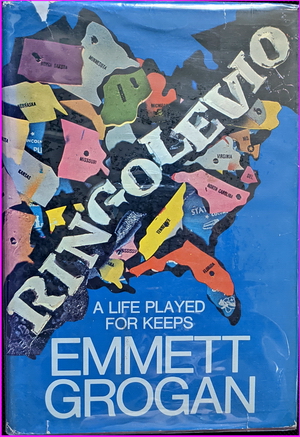 |
Ringolevio: A Life Played for Keeps - Emmett Grogan
(ISBN 13: 9780434305759)
"Ringolevio is a classic American story of self-invention by one of the more mysterious and alluring figures to emerge in the 1960s. Emmett Grogan grew up on New York City's mean streets, getting hooked on heroin before he was in his teens, kicking the habit and winning a scholarship to a swanky Manhattan private school, pursuing a highly profitable sideline as a Park Avenue burglar, then skipping town to enjoy the dolce vita in Italy. It's a hard-boiled, sometimes hard-to-believe, wildly entertaining tale that takes a totally unexpected turn when Grogan washes up in sixties San Francisco and becomes a leader of the anarchist group known as the Diggers.
The Diggers, devoted to street theater, direct action, and distributing free food, were in the thick of the legendary Summer of Love, and soon Grogan is struggling with the naive narcissism of the hippies, the marketing of revolution as a brand, dogmatic radicals, and false prophets like tripster Timothy Leary. Above all, however, he struggles with himself. Ringolevio is an enigmatic portrait of a man and his times to set beside Hunter S. Thompson's stories of fear and loathing, Norman Mailer's The Armies of the Night, or the recent Chronicles of Bob Dylan, who dedicated his 1978 album Street Legal to the memory of Emmett Grogan. Emmett Grogan (c.1943-1978) was born Eugene Grogan in Brooklyn, New York. Called a 'Superman of the Underground' by The Times (London), he was the founder of the Diggers, a legendary anarchistic group in the San Francisco Bay Area during the 1960s that supplied free food, housing, and medical aid to runaways. On April 6, 1978, the thirty-five-year-old Grogan was found dead on a subway car in New York City, possibly of a drug overdose. Besides his autobiography, Grogan was the author of Final Score, a fictional crime novel. |
| |
|
| |
|
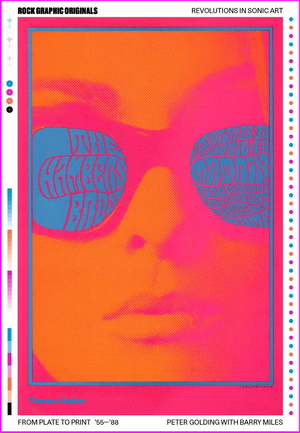 |
Rock Graphic Originals: Revolutions in Sonic Art from Plate to Print ’55–’88 - by by Peter Golding, Barry Miles (ISBN-13 : 978-0500293539)
As part of the ’60s and '70s fashion movement, Peter Golding’s famous ACE boutique in London’s Chelsea brought him into regular contact with the biggest names in rock ’n’ roll, and he went on to create one of the most comprehensive collections of rock ’n’ roll graphics in existence. Showcasing the cream of this collection, Rock Graphic Originals is packed with vibrant poster art, logos, stage set designs and promotional ephemera created for artists such as the Grateful Dead, Jimi Hendrix, Bob Dylan, Pink Floyd, The Doors, Bruce Springsteen, Eric Clapton, Kiss, The Who and Alice Cooper.
Organized chronologically into three sections, the book presents the evolution of highly wrought psychedelic poster art from its beginnings in the Beat era to its culmination in the vast stage sets of 1980s stadium rock. Original drawings, studies, paintings, finished artwork and separated plates are shown side by side, revealing the complete process involved in creating each printed poster and logo, and giving extraordinary insight into the creative minds of design giants such as Rick Griffin, Stanley Mouse and Alton Kelley. Barry Miles’s concise introduction places the key protagonists and their work within their cultural and political context, while reflections from the artists themselves lend unique perspectives on their influences and methods. |
| |
|
| |
|
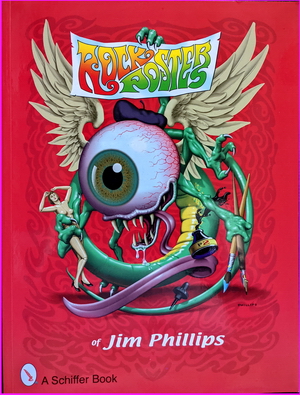 |
Rock Posters of Jim Phillips - Jim Phillips
(ISBN-13 : 978-0764325311)
This retrospective brings insight into hundreds of stunning rock posters by Jim Phillips made over 40 years, from 1965 to 2005, and counting. Phillips tells his life story and how the posters record an evolution of Rock Age music. Containing iconic images that advertise concerts featuring both emerging and established musicians, this collection will delight and astound you. Jim’s original, ground-breaking computer painted posters, along with his old-world style techniques are a real wonder sure to bring a smile. A bonus section presents Phillips’ son Jimbo’s rock posters. Rock musicians, fans, and hip audiences today all will pour over the fabulous images and lettering that set this work apart. |
| |
|
| |
|
|